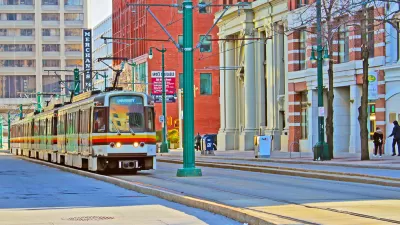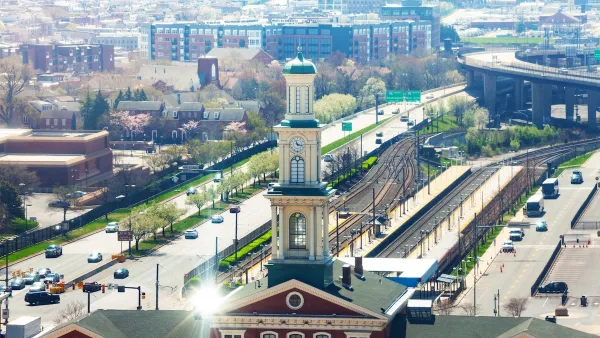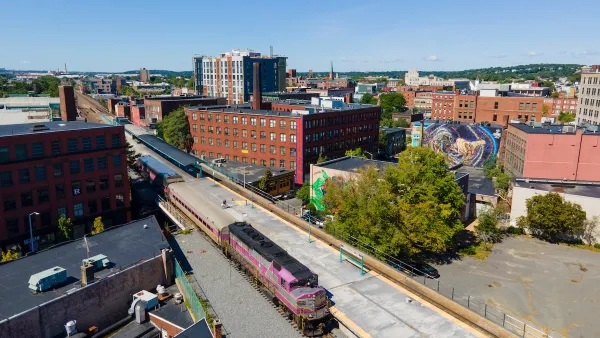The development of the $750M Buffalo Niagara Medical Campus, which will soon be home to 17,500 employees, is being seen as a catalyst for a culture change in the city towards urban lifestyles oriented around its heretofore underutilized rail system.

"Almost three decades after the first subway train rumbled beneath Main Street, Buffalo's Metro Rail system is about to assume the role that was intended and transport thousands of city residents to homes, work and play," reports Robert McCarthy. "The catalyst is the Buffalo Niagara Medical Campus, where 17,500 people are expected to be working soon, and they will depend more than ever on the oft-maligned 'train to nowhere.'”
"And while they now see Metro Rail finally fulfilling its transit and development potential, transit officials, real estate developers, city officials and those guiding the city's burgeoning medical industry all agree the development will spawn an urban lifestyle. It is also possible many Buffalonians may choose not to own cars, they say."
The Campus has spawned at least $91 million in transit-oriented development, a projected surge in rail ridership, proposals to extend the city's Metro Rail system to serve more areas, and a "new emphasis on a Main Street 'knowledge corridor' comprising the city's educational, financial, and legal institutions.
"These plans and ideas stem from a problem the City of Buffalo has not encountered for some time – growth, said Patrick J. Whalen, chief operating officer of the Medical Campus."
“It's been a long time since there's been any real growth here,” he said. “It's refreshing to be talking about it.”
FULL STORY: Development soars along Metro Rail

Planetizen Federal Action Tracker
A weekly monitor of how Trump’s orders and actions are impacting planners and planning in America.

Chicago’s Ghost Rails
Just beneath the surface of the modern city lie the remnants of its expansive early 20th-century streetcar system.

San Antonio and Austin are Fusing Into one Massive Megaregion
The region spanning the two central Texas cities is growing fast, posing challenges for local infrastructure and water supplies.

Since Zion's Shuttles Went Electric “The Smog is Gone”
Visitors to Zion National Park can enjoy the canyon via the nation’s first fully electric park shuttle system.

Trump Distributing DOT Safety Funds at 1/10 Rate of Biden
Funds for Safe Streets and other transportation safety and equity programs are being held up by administrative reviews and conflicts with the Trump administration’s priorities.

German Cities Subsidize Taxis for Women Amid Wave of Violence
Free or low-cost taxi rides can help women navigate cities more safely, but critics say the programs don't address the root causes of violence against women.
Urban Design for Planners 1: Software Tools
This six-course series explores essential urban design concepts using open source software and equips planners with the tools they need to participate fully in the urban design process.
Planning for Universal Design
Learn the tools for implementing Universal Design in planning regulations.
planning NEXT
Appalachian Highlands Housing Partners
Mpact (founded as Rail~Volution)
City of Camden Redevelopment Agency
City of Astoria
City of Portland
City of Laramie





























